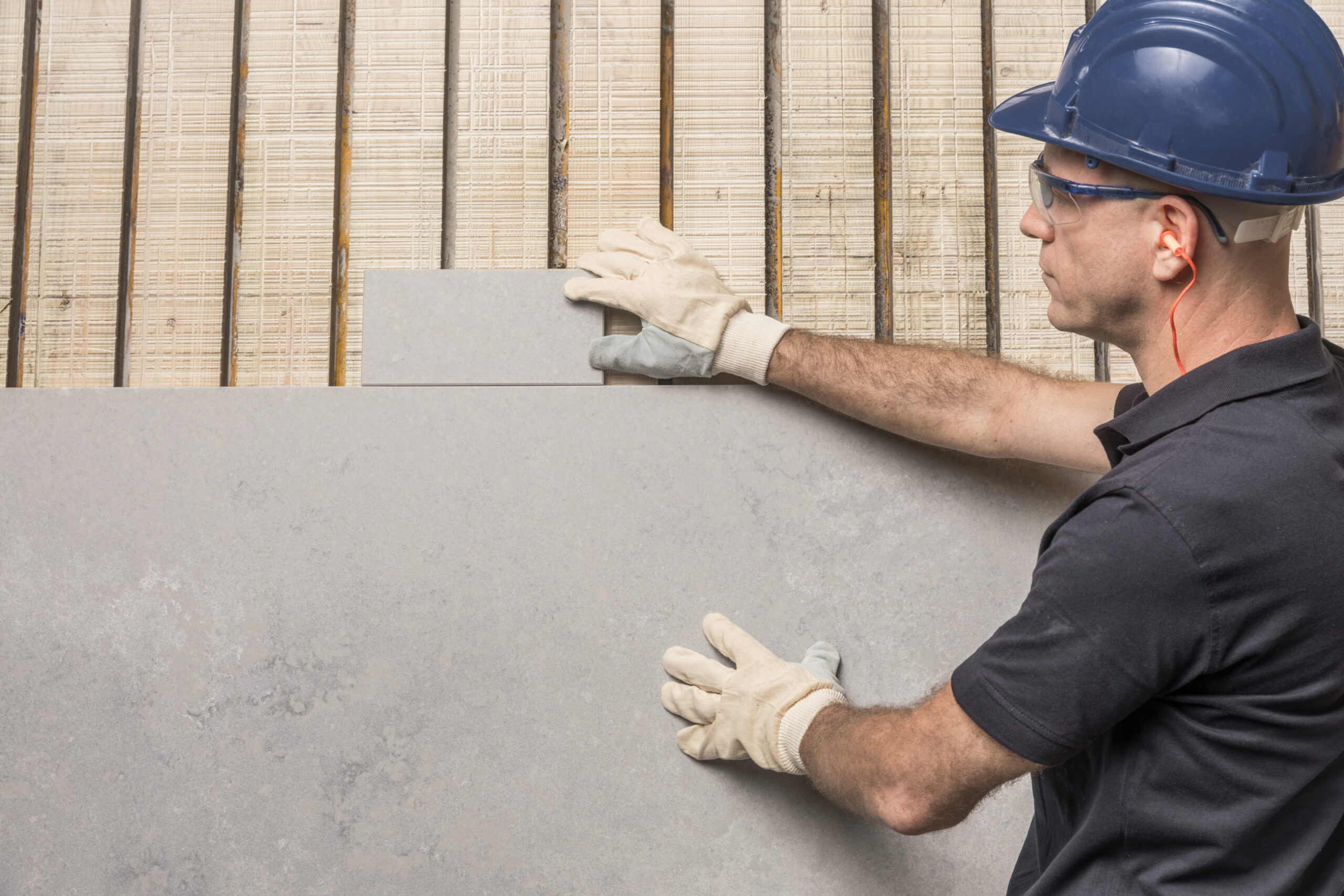
Health & Safety
Questions & Answers
About Caesarstone, silica, safety and industry standards

Health & Safety
About Caesarstone, silica, safety and industry standards
Silica is one of the most common compounds on earth. It is composed of two chemical elements: silicon and oxygen (silicon dioxide, SiO2). Silica is found in nature in various forms, mainly as sand, and also as rocks and stones such as marble, granite, quartz and cristobalite. It is a component of many manufactured products in daily use, such as glass, pottery and countertops; and very commonly used in construction and at various concentrations in bricks, blocks, tiles, slabs, cement and concrete.
Caesarstone is a global leader of premium surfaces, specializing in countertops.Caesarstone products are in use today in millions of homes and commercial settings globally.
Caesarstone manufactures a variety of stone surfaces:
Fabricating stone surfaces generates silica dust particles. Part of the silica dust contains small particles which are “respirable” – that is, breathable – and are tiny enough to bypass the body’s defenses and enter the lungs. This can cause irreparable damage to the lungs and can result in silicosis (see below).
Exposure to respirable crystalline particles of a very small size (less than 10 microns) may cause silicosis, an incurable, progressively disabling and sometimes fatal lung disease. Silica dust particles become trapped in lung tissue, causing inflammation and scarring and reducing the lungs’ ability to take in oxygen. Symptoms of silicosis can include progressive shortness of breath, cough and fatigue. Safety measures including wet processing and the use of effective respiratory protection will reduce the burden of inhaled dust and can prevent the disease.
Yes. Exposure to crystalline silica dust and the related risks that may result from such exposure can be reduced and controlled if the proper safety measures are implemented. These measures include, among others, installing proper engineering controls (ventilation and filtration), working with CNC machines and water-injected tools, and using appropriate respiratory protection.
You must assess and ensure that occupational exposure to airborne crystalline silica dust is below the Permissible Exposure Limits established by your local authority and regulations. Always apply your local laws and regulations regarding working in environments containing harmful dust.
In order to control and reduce/eliminate the health risks associated with crystalline silica, we recommend that a Silica Control Program be implemented in the workplace in accordance with all the applicable laws, regulations, orders and directives. This program should be reviewed on a regular basis.
It is important to note that the exposure and personal protection precautions are only necessary for the fabrication of Caesarstone products (cutting, sawing, polishing etc.), due to the dust that may be generated in the process, and not from the Caesarstone slab as a product.
The employer is responsible for providing his workers with all the information, tools and safety measures required in order to protect them from the dangers of exposure to silica dust. The workers are responsible for fully implementing the safety instructions. Access to the work area should be restricted to authorized employees only. By a joint effort of the employer and workers, the workplace can become a healthy environment for everyone.
The stone fabrication plant employers are responsible for the health and safety of their employees in all matters related to work in these plants. Stone fabrication plant owners, managers and workers must implement all the required health and safety requirements, which include, among others, air monitoring, use of proper work procedures, engineering controls and PPE, to ensure their workers are properly protected from exposure to silica. The employer and the owner of stone fabrication plants are responsible for providing the workers with all the training, warnings, information, tools and safety means required to protect them from the dangers of exposure to crystalline silica dust and for enforcing the implementation of all safety means by the workers. The workers are responsible for fully implementing the safety instructions. By a joint effort of employers and workers, the workplace can become a healthy environment for everyone.
Absolutely not. Caesarstone surfaces are completely safe for domestic use. Silicosis is only an occupational disease resulting from ongoing, unprotected exposure of workers to silica dust.
The health risk lies in the processing procedure of the slabs, if performed not in accordance with health and safety legal requirements. The professional technician performing these processes possesses the knowledge and tools to protect him or herself from the silica dust. As in every place where professional technical work is carried out, no person other than the professional technician should be present near the working area during the performance of this work.
Caesarstone surfaces maintain the most stringent industry standards for health and environment, as listed below, and as presented on the Caesarstone website.
Caesarstone products are compliant with the National Sanitation Foundation International standard, ensuring that our working surfaces are safe for use in all food environments.
All of Caesarstone’s production plants have a certified Environmental Management System in accord with ISO 14001, and a Health & Safety Management System in accord with OHSAS 18001/ISO 45001 (USA).
Caesarstone is a registered member of the USGBC (United States Green Building Council).
Caesarstone surfaces comply with the American GEI (GREENGUARD Environmental Institute) certification, which primarily verifies that Caesarstone’s products meet the most stringent air emission standards.
Caesarstone surfaces incorporate up to 42% pre-consumer recycled glass and mirrors in different models.
Caesarstone surfaces are kosher due to their low porosity.
It is important to point out that silica dust is found in many products in our day-to-day lives such as glass, ceramics, semi-conductors and much more.
Working with crystalline silica (quartz) is found in numerous industries including:
The objectives of the Caesarstone Good Practice Guide are to: